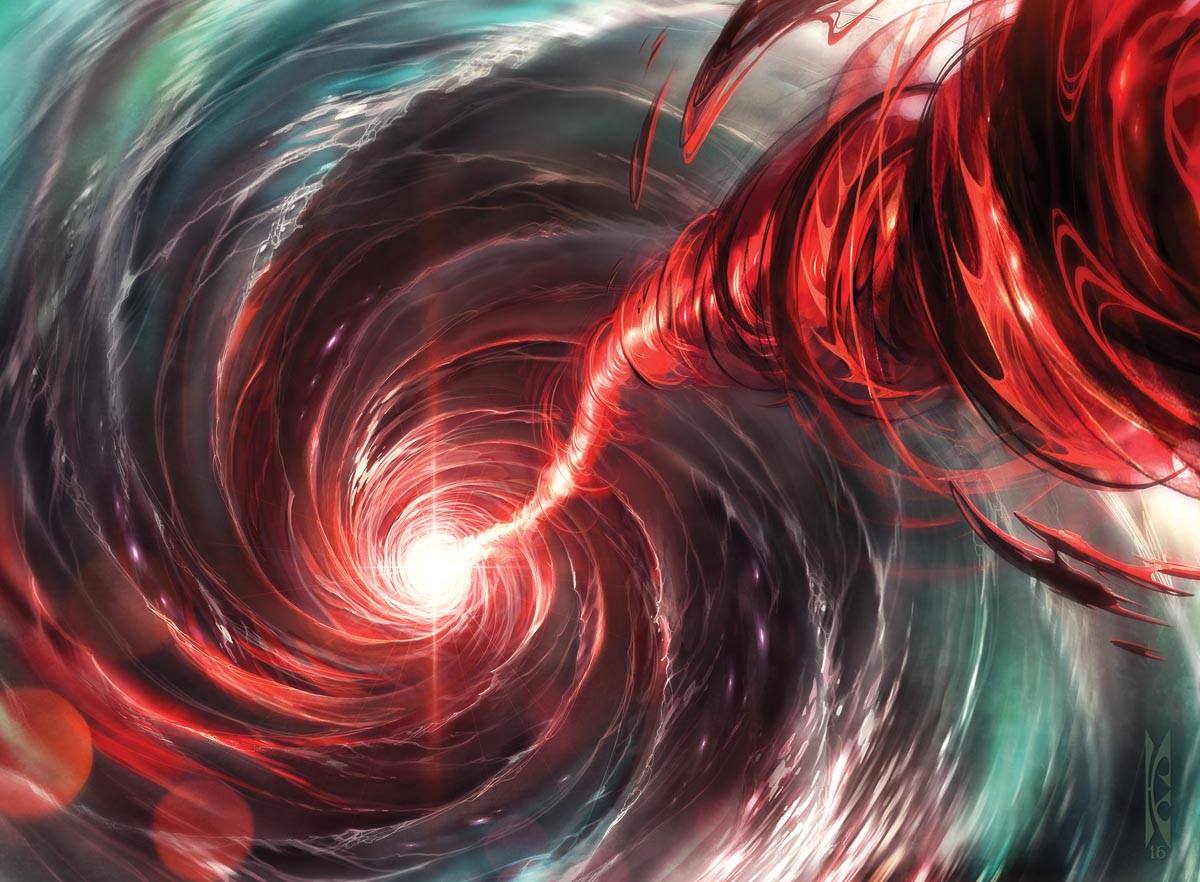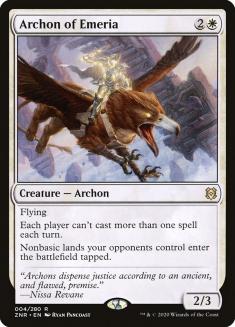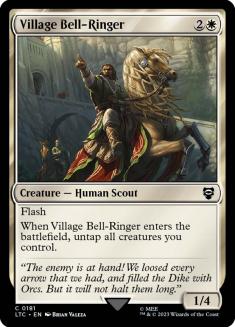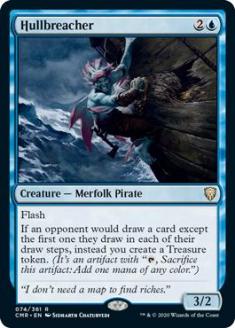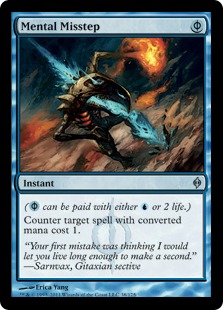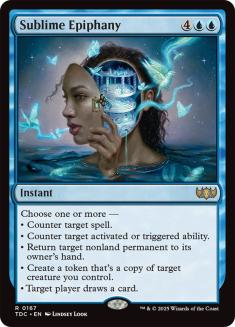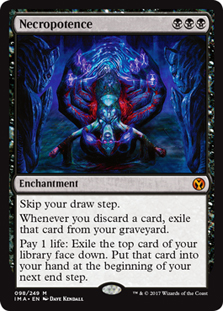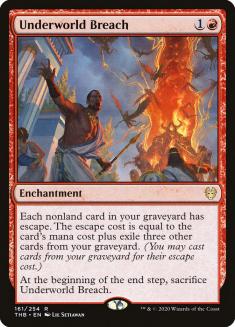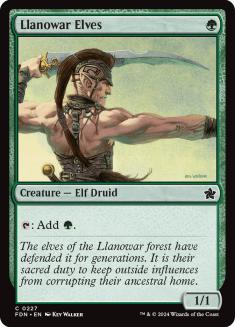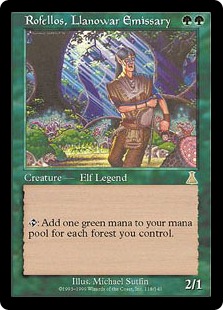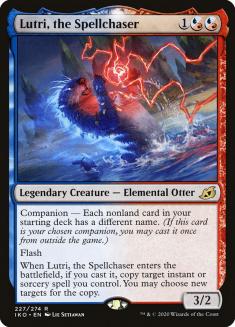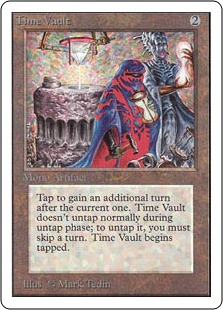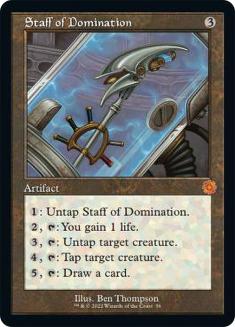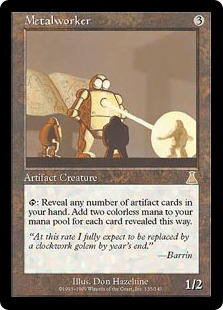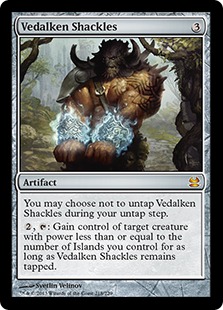After a week of Nega-Cube on Magic Online (MTGO) and the newfound ability to draft Arena Cube on my phone, one might wonder if I’m starting to feel Cubed out. No such thing, my friends. I would draft 500 Cubes, and I would draft 500 more. That inexhaustible passion for Cube is going to come in handy, because this week on MTGO we’re drafting Andrea Mengucci’s MenguCube!
You might know Andrea as a world-class professional player and Mythical Invitational champion. If you follow him on Twitter, then you’re also aware that he just plain loves Magic. It’s very common for him to post pictures of sweet new card acquisitions and Cube decks between very strong finishes on MPL weekends. I imagine that very few people are as invested in Magic as Andrea, which makes seeing his Cube get a Spotlight week on MTGO all the more exciting.
To put things in the most simple terms, MenguCube is Vintage Cube but a higher percentage of the cards are blue. If you’d like a more substantial description from the man himself then I’d recommend reading his article introducing the Cube. I’ve ported the posted list to Cube Cobra, and I believe that the best way to gain a quick understanding of the Cube is to compare it directly to the most recent MTGO Vintage Cube list.
At this point I’ve produced a lot of content about the MTGO Vintage Cube, so before we get into MenguCube it seems worthwhile to offer some links as a refresher. I’d recommend my general breakdown of all things Vintage Cube, my write-up on the most recent updates, and the episode of The 540 that Justin Parnell and I dedicated to Vintage Cube. Now that you’ve liked and subscribed to my podcast, let’s talk about what makes MenguCube unique. From here we’ll take the usual approach of a breakdown by color, with a specific focus on how this Cube is different from the Vintage Cube that we’re used to.
White
A couple of things jump out to me immediately. The first is the presence of Palace Jailer, which I feel has long been conspicuously absent from the Vintage Cube. Love it. The second is that there are fewer total one-drops, with Giver of Runes and Legion’s Landing missing from MenguCube. I love this less.
Giver of Runes only really matters in terms of volume of one-drops, but Legion’s Landing is, in my opinion, one of the best aggressive white one-drops. Mono-White Aggro overperforms in the MTGO Vintage Cube, but these changes make me skeptical of the archetype in MenguCube. At a glance, it looks like the red and white aggressive decks will more commonly be Boros than either single color in this environment.
The presence of Archon of Emeria suggests that the white decks will more commonly take on a prison role with less focus on beating down, which is also supported by the removal of dumpy five-drops like Baneslayer Angel in favor of the much more interactive Angel of Sanctions. Village Bell-Ringer also shows up as yet another card to fit into Splinter Twin combo, giving white a more meaningful role in decks of two or more colors.
The strangest thing about the Cube list as published is that there are two Wall of Omens and no other duplicates. I don’t know if this is deliberate or an error, and if it is an error, what the nature of the error is. Wall of Omens barely registers to me as a playable card in Vintage Cube, so whatever the reason that it appears twice on this list is, it got a chuckle out of me.
These are the most significant changes to white, and my general notes are that the aggressive decks look like they’ve lost a little steam, but an Azorius-based deck seems like a very reasonable draft lane. It is notable that Battlefield Forge, Needleverge Pathway, and Mana Confluence show up in the Cube as additional untapped lands for Boros aggressive decks, and if these decks prove more competitive than in the regular Vintage Cube, it will be because these lands make up for the reduction in one-mana threats.
Blue
Blue always has been and always will be the best color in Vintage Cube. There are more blue cards in the MTGO Vintage Cube than any other color, and there are even more blue cards by volume in MenguCube. Unsurprisingly, this makes me more inclined to draft blue in this environment. I see that Cosima, God of the Voyage has made the cut, and I’ll be holding strong in my refusal to read the card. There are three other cards in this list that are worth taking notice of though.
This will be Hullbreacher’s first appearance in a non-Supreme Draft Cube on MTGO. It was slotted to show up in Vintage Cube at the end of last year, but was cut at the last minute and has not been reintroduced. You can find my thoughts on the card at that time here, and they haven’t changed much. I would consider Hullbreacher for overall Pack 1, Pick 1 in the Cube, and don’t anticipate passing the card this week.
Mental Misstep is a cheeky inclusion in the Cube that I imagine most players have very little experience playing with. The card had a very short shelf life in Constructed Magic, and is not terribly common to see in Cube. It’s a bit odd to me that the Cube is so light on aggressive one-drops and then also has Mental Misstep on top of that, but all the same I would maindeck Mental Misstep more often than not with the intention of sideboarding it out against Signet tribal. You’ll typically be able to counter something with it, and the ceiling of hitting a card like Ancestral Recall, Sol Ring, or Entomb is very high.
Finally, we come to Sublime Epiphany, which has actually shown up in a few of the MTGO and Arena Cubes. To date, I have never lost a Cube game in which I have resolved a Sublime Epiphany, and it has struck me as too powerful for most non-Vintage Cubes. In fact, it was really odd to see it continue to show up in environments where it easily wins games while having never been previously featured in the MTGO Vintage Cube. Six mana is a steep cost, but it’s incredibly easy to make the juice worth the squeeze on this one. All of the modes are generically powerful and you’ll be getting more than one card’s worth of value out of this one every time.
Blue has the lion’s share of historically powerful cards, and it also just has significantly more cards in this Cube than any other color. You always need a good reason not to draft blue in Vintage Cube, and that’s all the more true in MenguCube.
Black
In a weird way, I feel like black is better in MenguCube than it is in the MTGO Vintage Cube despite being about ten cards lighter. All of the cuts were horrible two- and three-mana creatures, and all of the powerful control and combo stuff has been preserved. I feel like Plague Engineer is a really weird choice given that its function is very specific and the gameplay around it is very bad, but I’ll play it more often than Phyrexian Rager. Sure seems like it embarrasses a number of starts from the white and green decks.
The most specific card to take notice of in black is Necropotence, a once oppressively powerful fixture of Constructed Magic that is rarely talked about anymore. I imagine that nearly every deck that would play Dark Ritual would be happy to register Necropotence. We’ve gotten a lot of similar effects at six mana lately, and while BBB is a tough mana cost, the ability to come online consistently earlier than Bolas’s Citadel will swing a number of games. MenguCube actually eschews Yawgmoth’s Bargain in favor of Necropotence, and while I personally tend to play Bargain in my Signet-heavy decks, I don’t play against a lot of Bargains so this isn’t surprising or disagreeable.
I can’t remember the last time I’ve wanted to play Mono-Black Anything in Vintage Cube, so the reduction in cards so that the black decks just play more blue cards strikes me as a general upgrade even if the individual cards are about the same altogether.
Red
I’ve been complaining about the dearth of red one-drops in the MTGO Vintage Cube for a long time and as such I’m sad to see that MenguCube has even fewer one-drops. Good riddance to Goblin Welder, but so many of the red cards featured lose a lot of appeal if you’re not able to hit a high volume of one-drops. I’ll repeat what I said about white in that it seems that Boros is the way to go for aggressive decks, and I’ll also repeat that I’m not thrilled about drafting those decks.
Stormbreath Dragon over Siege-Gang Commander gets a resounding “Who cares?” from me, and I’d say that the additions of Manic Vandal, Irreverent Revelers, Release the Gremlins, and Fiery Confluence to fight artifact mana are among the most significant additions to red in the Cube. The absence of Abrade is somewhat jarring, but all of these cards are solid. Though there is one card that we haven’t seen in the Vintage Cube in a while that is quite a bit more exciting to me.
Underworld Breach is among the best cards for Storm decks ever printed, and just having it, Lion’s Eye Diamond, and Brain Freeze in your deck opens up a lot of positions where you can win out of nowhere. This is sort of the “easy mode” for Storm decks, and given that even the best Storm decks sometimes just fold over on themselves, I’m happy to see this package present. You’ll have to be a bit more mindful about filling your graveyard when using Underworld Breach as opposed to Yawgmoth’s Will, but it’s disgustingly powerful when it works.
I see the differences between the MTGO Vintage Cube and MenguCube with regard to red as largely lateral shifts, and I’d prefer to see more red one-drops in both, but if nothing else, the addition of Underworld Breach means that MenguCube has more first-pickable red cards.
Green
When presented with a golden opportunity to cut Gilded Goose, Andrea declined. He did cut perennial underperformers Fauna Shaman and Yavimaya Elder though, so I have to applaud him for that.
On balance, green is more or less the same between the two Cubes. The primary focus is still “mana and stuff” and all of the green archetypes are preserved. It’s clear looking at the list that Andrea and I value a number of different things in the green decks, but the color is definitely solid in his list.
The one thing that I want to come back to is that pesky Plague Engineer. I’m going to be a lot more hesitant to draft Llanowar Elves and Rofellos, Llanowar Emissary in this Cube than normal knowing that the possibility that I get completely decimated for attempting to play the game exists. Some wouldn’t consider this as big a feel-bad as getting Strip Mined out of the game, but hate cards sting a lot harder from my perspective than generically powerful cards in a generically powerful format.
I expect to draft far more Simic-based decks than my usual Mono-Green in this environment for this reason and because of the higher volume of blue cards. I expect that most of my green drafts in MenguCube will be motivated by Oko, Thief of Crowns and Leovold, Emissary of Trest.
Gold
We’re mostly dealing with the usual suspects here, so there’s not a ton to say. The most major note is that there are fewer nonblue gold cards and less mana-fixing for the nonblue color pairs for the blue ones, so be even more wary of that sort of thing than usual.
The most powerful card in this section that you won’t find in the MTGO Vintage Cube is Lutri, the Spellchaser. This card was completely bonkers in Cube before they nerfed companion and is still really good to have as an extra card in any deck even now. I wouldn’t take it over power or anything like that, but anything like a removal spell that you’ll have a lot of looks at will be worse than scooping up Lutri as a companion. Just be careful not to draft two Wall of Omens.
Artifacts
There’s not a ton of fancy stuff going on with the artifacts in MenguCube, though it’s worth noting that some colors get a Talisman and a Signet, some colors get one or the other, and Selesnya and Gruul get nothing. Personally I’m more than willing to play off-color mana rocks, and I won’t be paying as much attention to which Signets or Talismans are present as to which powerful spells are available in the draft in each color.
On the topic of powerful spells, the first card to ever be cut from the MTGO Vintage Cube on power level is making its return to the world of digital Cubes in MenguCube. As Andrea points out in his article, there are only a couple of ways to untap Time Vault in the Cube and I don’t expect it to be as powerful as it would be in a Cube with Voltaic Key and Tezzeret the Seeker, but it’s a good card to speculate on early in draft to try to pull off an infinite turn combo. I’m personally a big Tezzeret the Seeker fan and I’d rather see both cards or only Tezzeret, but the only Time Vault configuration does at least give the draft environment something unique.
On the topic of oddball two-card combos, Staff of Domination shows up in MenguCube to go infininte with Metalworker and three artifacts in hand. That one will come up even less often than Time Vault, but it’s good to be aware of.
Lastly, Vedalken Shackles deserves a brief discussion. It’s more of a blue card than an artifact, but it doesn’t seem difficult to control a bunch of Islands in this Cube. You won’t be able to bully a Griselbrand with a Vedalken Shackles the way you can with a Treachery, but the card is absolutely backbreaking against smaller creatures. There are games against aggressive decks that Vedalken Shackles wins all on its own, and for that reason this card should be valued very highly in blue decks and it’s yet another reason to have artifact destruction in your aggressive decks.
Lands
Much like with mana rocks, we see asymmetry with mana-fixing lands. Izzet and Dimir have more mana-fixing lands than the other color pairs, so I’m willing to call MenguCube an honorary Grixis Cube. The distribution of lands here reflects the distribution of spells in each color, so it shouldn’t be too often that you find yourself missing on lands for a given color pair when it otherwise seems open and sensible to draft.
I really like the idea of skewing the color distribution in a Cube to accommodate the fact that blue is the most powerful color and the most liked color in your playgroup. It’s less extreme than just cutting all of the white and green cards, so it probably has more mass appeal there, too. I’m looking forward to drafting MenguCube, even if I’m already sick of Hullbreacher.

